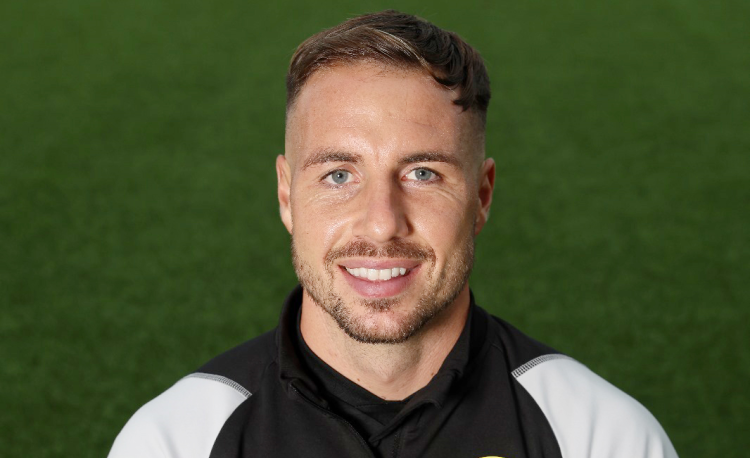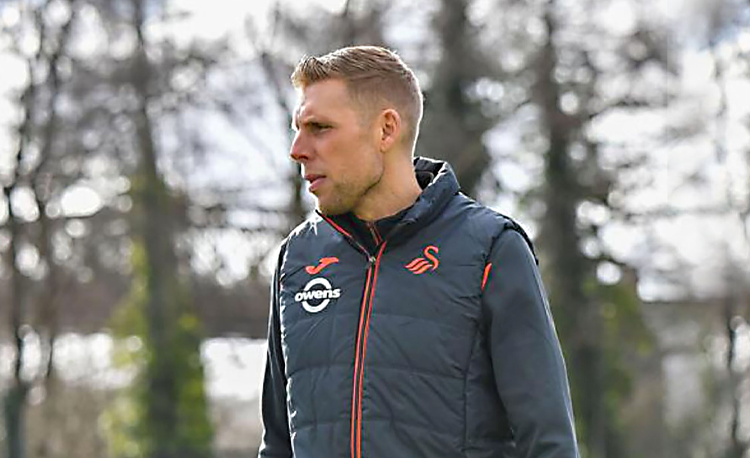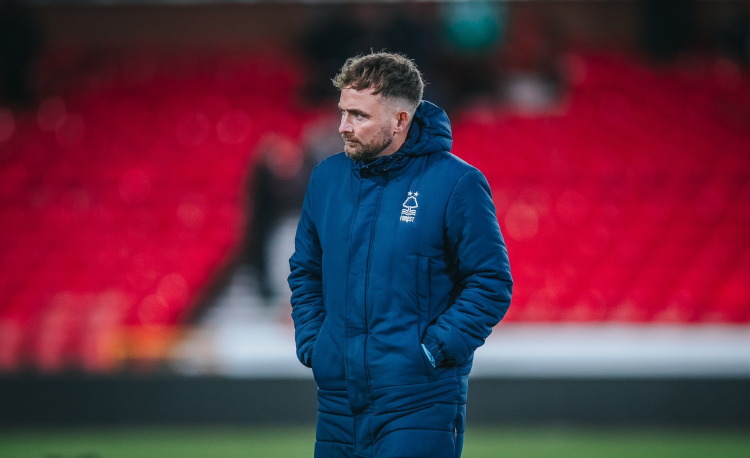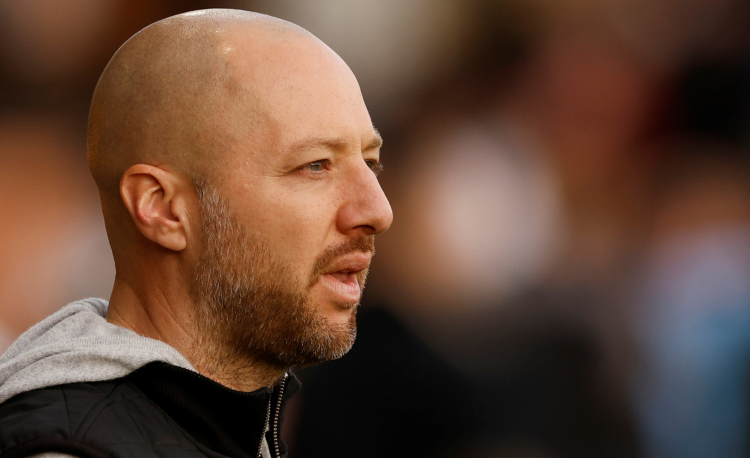You are viewing 1 of your 1 free articles
Developing wide players
This session will improve the 1v1 skills needed to beat an opponent with limited space and break down the most effective ways of finishing from angled positions from goal.
| Area | Up to 45x70 yards |
| Equipment |
Mannequins, mini goals, full size goals |
| No. of Players | 14 outfield + 2 goalkeepers |
| Session Time | Unopposed finish: 10 mins Semi-opposed finish: 12 mins Wave game: 16mins 8v8: 26mins |
This session will improve the 1v1 skills needed to beat an opponent with limited space and break down the most effective ways of finishing from angled positions from goal. The session will look to develop understanding of when, where and how to make out-to-in runs in behind the last line of defence. It is designed to give players the tools needed to unlock a low-block defence. Many of the top wide players now have the ability to drag the opponent one way, with the timing and deception to speed up and dribble inside or outside past them. The session is suited to teams who play with inverted wide players. It could be run as an individual needs practice but also can be linked into matchday-1 or -2 preparation. Wide players should be working on this type of work weekly, and should target this type of practice to help them become a 20-goal-a-season level player.
“The session is suited to teams who play with inverted wide players”
Unopposed finish
We set up in an area around the penalty box with a full size goal and two mini goals as shown, with two teams of three and one coach. This is a 1v1 practice. The coach plays the first ball in for a blue player who is making an arced run across the front of the mannequin. The attacker makes an unopposed finish.
As soon as the attacker takes the shot, they transition to defend the second ball which the coach has played to the red winger on the angle of the box [1].
[1]

-
The blue player makes an arced run across the front of the mannequin
-
They receive the ball from the coach
- They shoot at goal, then transition to defend, getting across the box to defend against the red winger, who has received the ball from the coach
- The red winger attacks 1v1 and scores
We run this for four blocks of two and a half minutes each.
“The attacker transitions to defend the second ball”
Semi-opposed finish
We set up in an area around the penalty box with a full size goal and a mini goal as shown, with two teams of two and one coach. The coach starts the practice by playing the ball to the blue winger who dribbles at the red defender who can’t tackle. This creates semi-opposed pressure for the blue player to drag and dodge inside them to shoot. The coach plays the second ball to the second blue attacker. The teams now play pressure 2v2 [2].
[2]

-
The coach plays the ball to the deepest blue player who dribbles at the red defender
- The red defender can’t tackle
- The blue player drags and dodges inside and shoots
- The coach plays a second ball to the second blue player
- The teams play 2v2
We run this for four blocks of three minutes each.
“The blue player drags and dodges inside the defender to shoot”
Wave game
We set up in an area 45 yards long and 50 yards wide with two full size goals, as shown. There are four reds, three blues, two goalkeepers and one coach. The ball starts with the red goalkeeper who plays it to a red player who clips a long ball into the blue left winger to play 3v3 [3a].
[3a]

-
The ball starts with the red goalkeeper who plays it to a red player
- The red clips a long ball into the blue winger
- The teams play 3v3 and the blues score
“The teams play 3v3”
The coach plays a second ball for red on the outside to run onto. This player crosses the ball into the box, for the blues to attack [3b].
[3b]

-
The coach plays a ball for the outside red player to run on to
- The red player crosses the ball in for the blues to attack
For the third ball, the coach goes up against the red on the outside, only applying semi-opposed pressure. The red winger comes inside the pitch to attack the other goal with the rest of the reds, creating a 4v3 [3c].
[3c]

-
The coach goes up against the red on the outside, applying semi-opposed pressure
- The red winger beats the coach and goes inside
- The teams play 4v3
- The reds score a goal
We run this for four rounds of four minutes each.
8v8
We set up on a pitch 45 yards long and 70 yards wide with two full size goals, as shown. Teams play 8v8, including goalkeepers. The focus is on beating a low-block. The reds start three goals up. The blues start the game with a penalty and they always get the ball back from any restart [4a].
[4a]

-
The reds start three goals up
- The blues start the game with a penalty and score
- The blues now restart
“The focus is on beating a low-block”
We run this for two rounds of eight minutes, before progressing to ten minutes of free play [4b].
[4b]

-
The teams now play 8v8 free play
“We then progress to ten minutes of free play”
COACHING POINTS
What are the key things to look out for?
Key things to look out for are: dragging with the inside of the foot to slow down the opponent to then speed up and dribble with the outside; using deception, such as a drop of the shoulder or a different skill move when the defender comes out, to fake which way you’re going to travel; using the inside of the foot to bend the ball from outside the post and bring it back in; using the laces to hit it back across goal to go against the goalkeeper’s movement; wide player positioning to make a run off the back of the full-back to make an out-to-in run.
What are the typical mistakes players might make and how do I avoid them?
Typical mistakes are no change of speed to beat the defender, lashing at the ball when finishing, not shifting the ball and not shooting often enough.
Related Files
Editor's Picks
Using the goalkeeper in build-up play
Pressing principles
Intensive boxes drill with goals
Penetrating the final third
Creating and finishing
My philosophy
Pressing initiation
Compact team movement
Defensive organisation
Coaches' Testimonials

Alan Pardew

Arsène Wenger

Brendan Rodgers

Carlos Carvalhal

José Mourinho

Jürgen Klopp

Pep Guardiola

Roy Hodgson

Sir Alex Ferguson

Steven Gerrard
Coaches' Testimonials

Gerald Kearney, Downtown Las Vegas Soccer Club

Paul Butler, Florida, USA

Rick Shields, Springboro, USA

Tony Green, Pierrefonds Titans, Quebec, Canada
Join the world's leading coaches and managers and discover for yourself one of the best kept secrets in coaching. No other training tool on the planet is written or read by the calibre of names you’ll find in Elite Soccer.
In a recent survey 92% of subscribers said Elite Soccer makes them more confident, 89% said it makes them a more effective coach and 91% said it makes them more inspired.
Get Monthly Inspiration
All the latest techniques and approaches
Since 2010 Elite Soccer has given subscribers exclusive insight into the training ground practices of the world’s best coaches. Published in partnership with the League Managers Association we have unparalleled access to the leading lights in the English leagues, as well as a host of international managers.
Elite Soccer exclusively features sessions written by the coaches themselves. There are no observed sessions and no sessions “in the style of”, just first-hand advice delivered direct to you from the coach.








